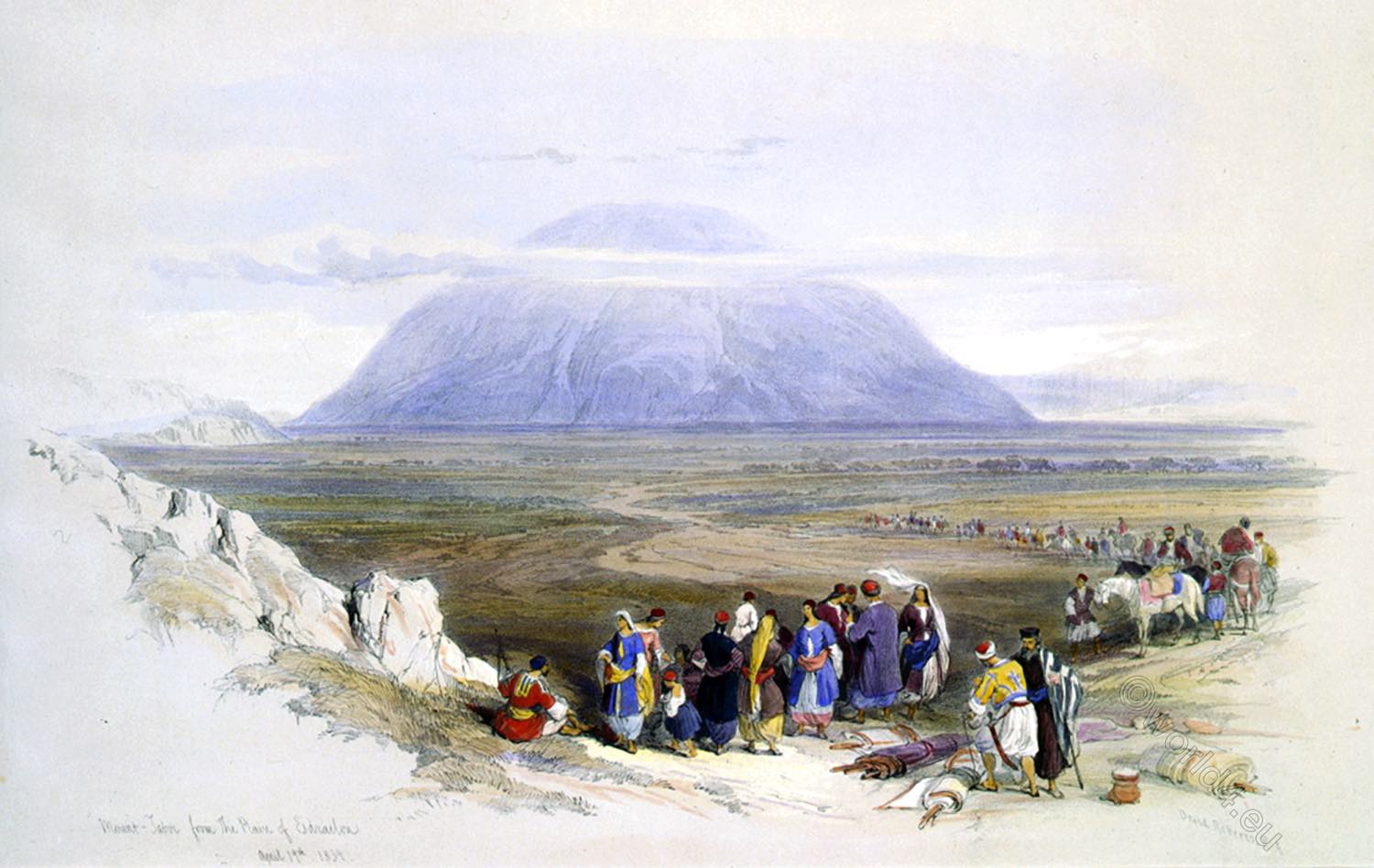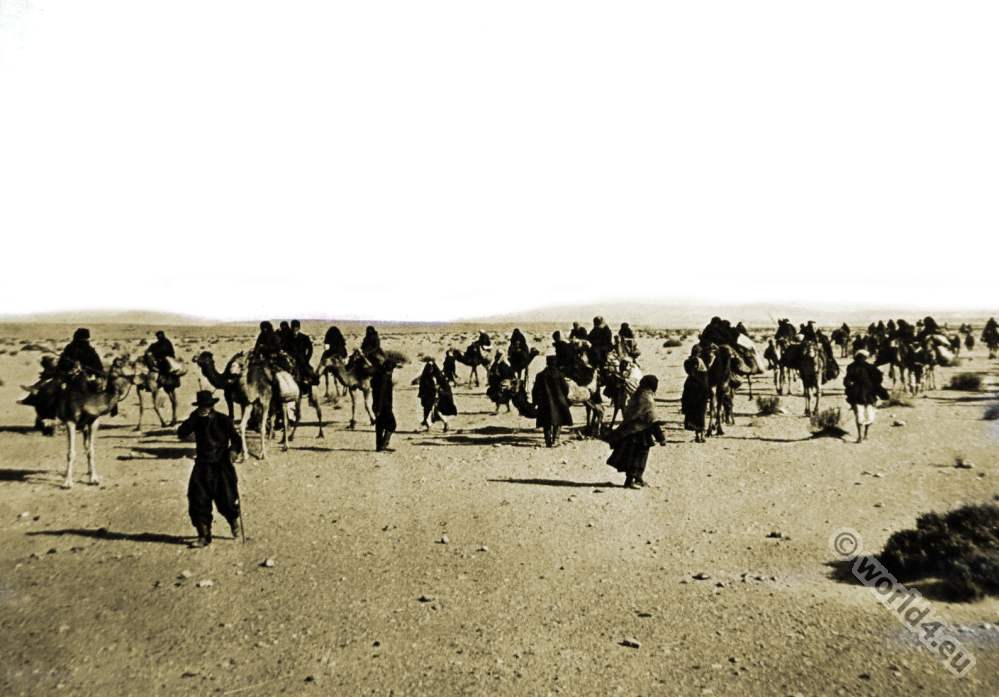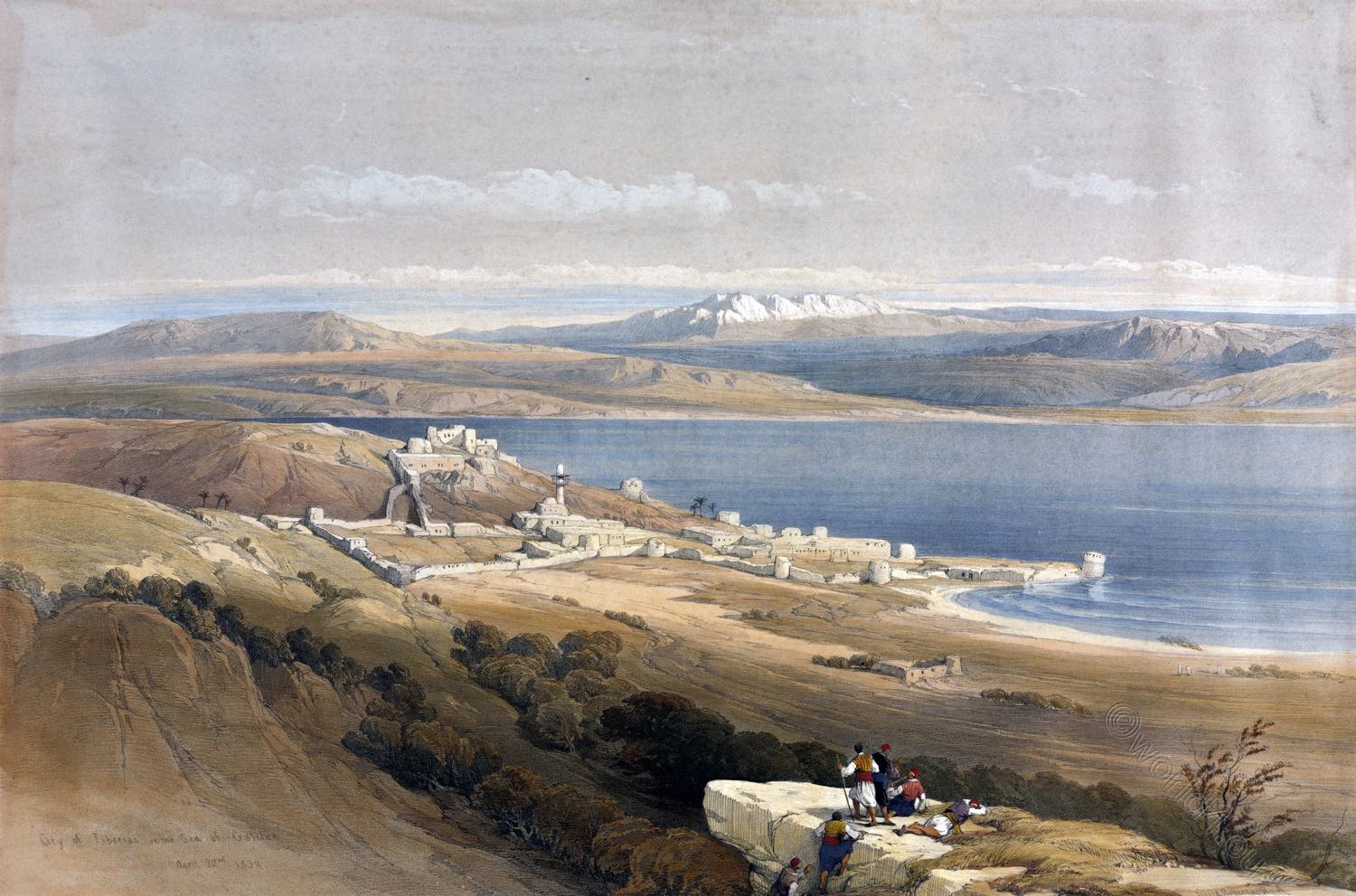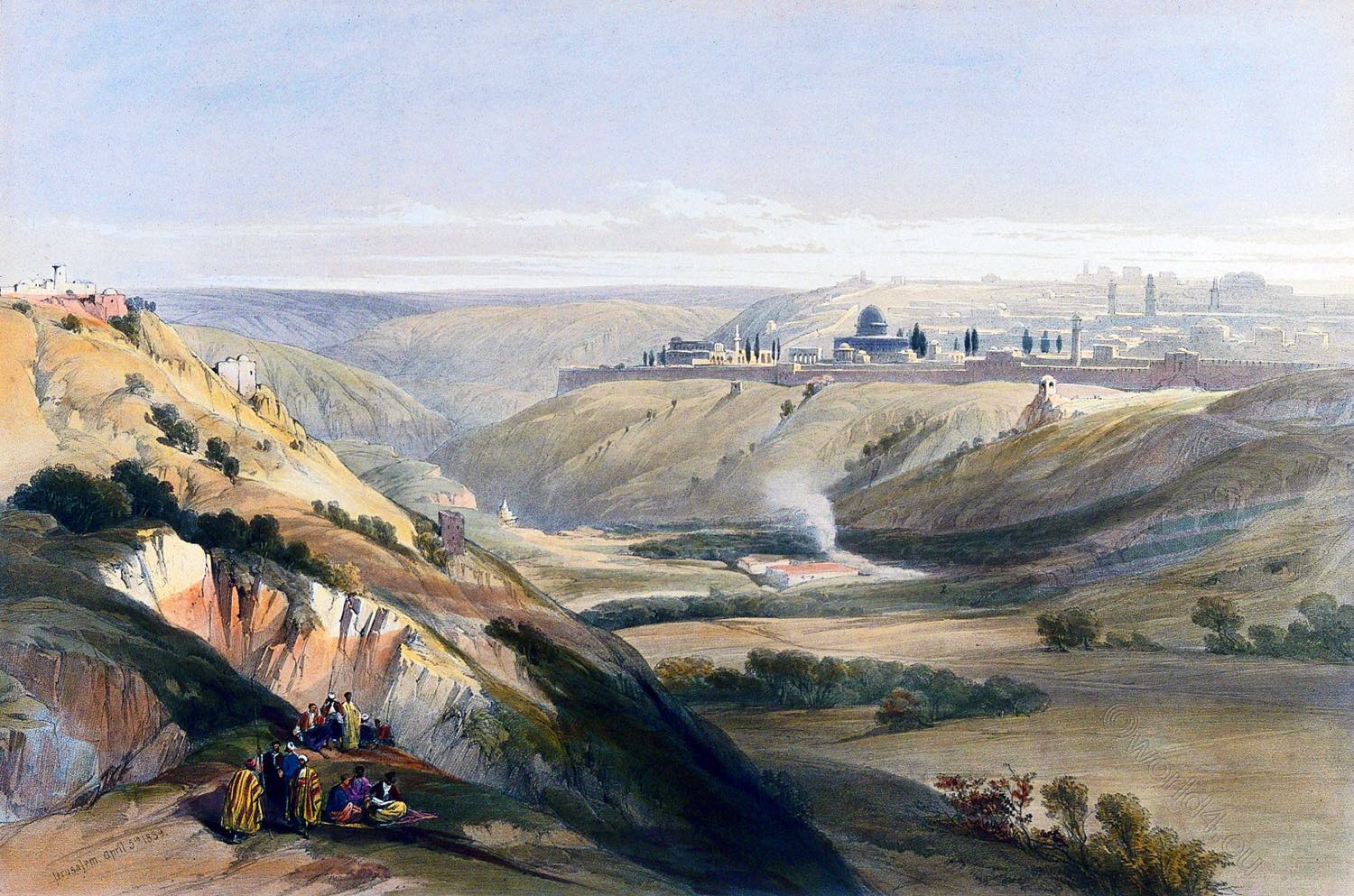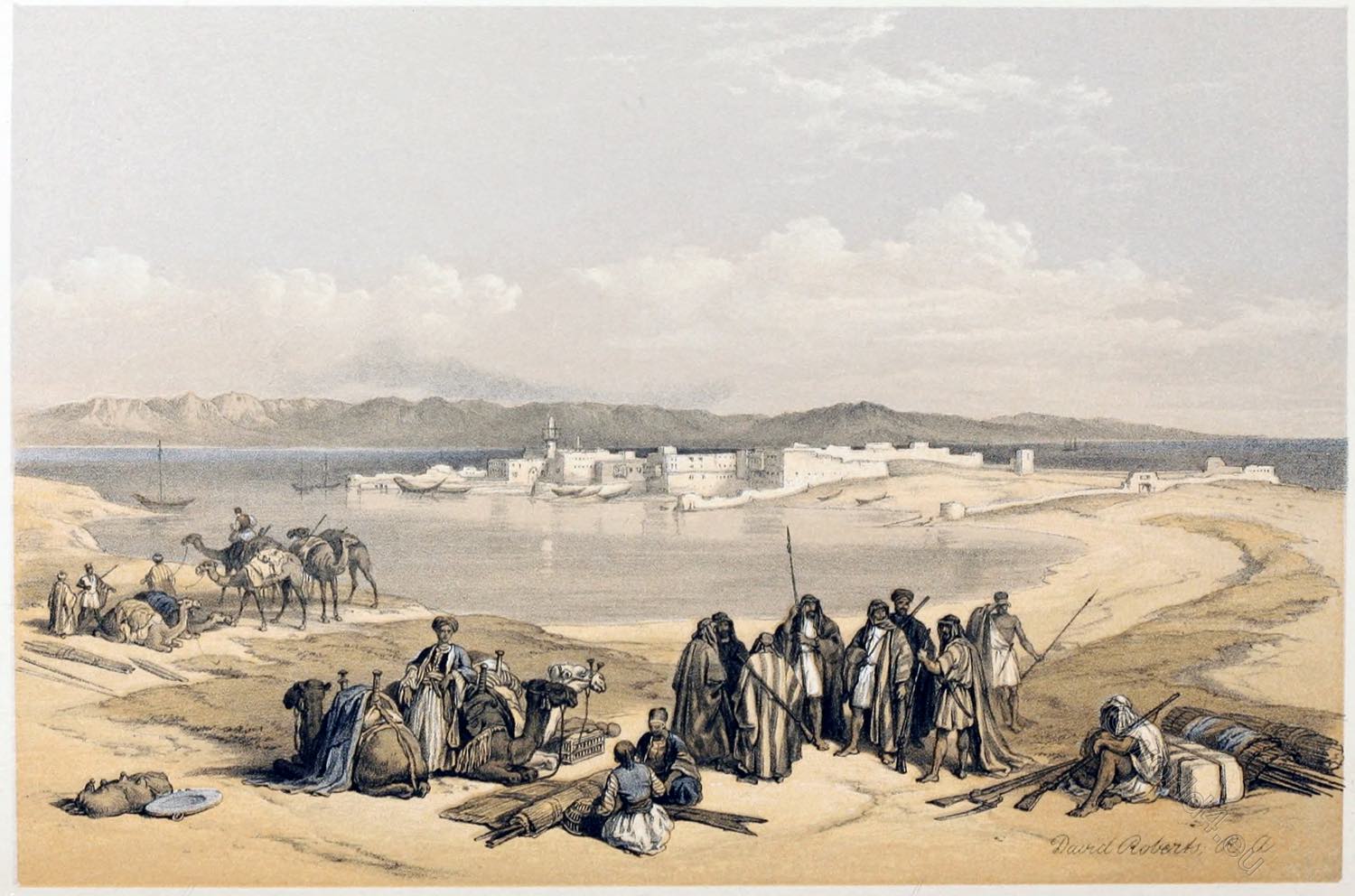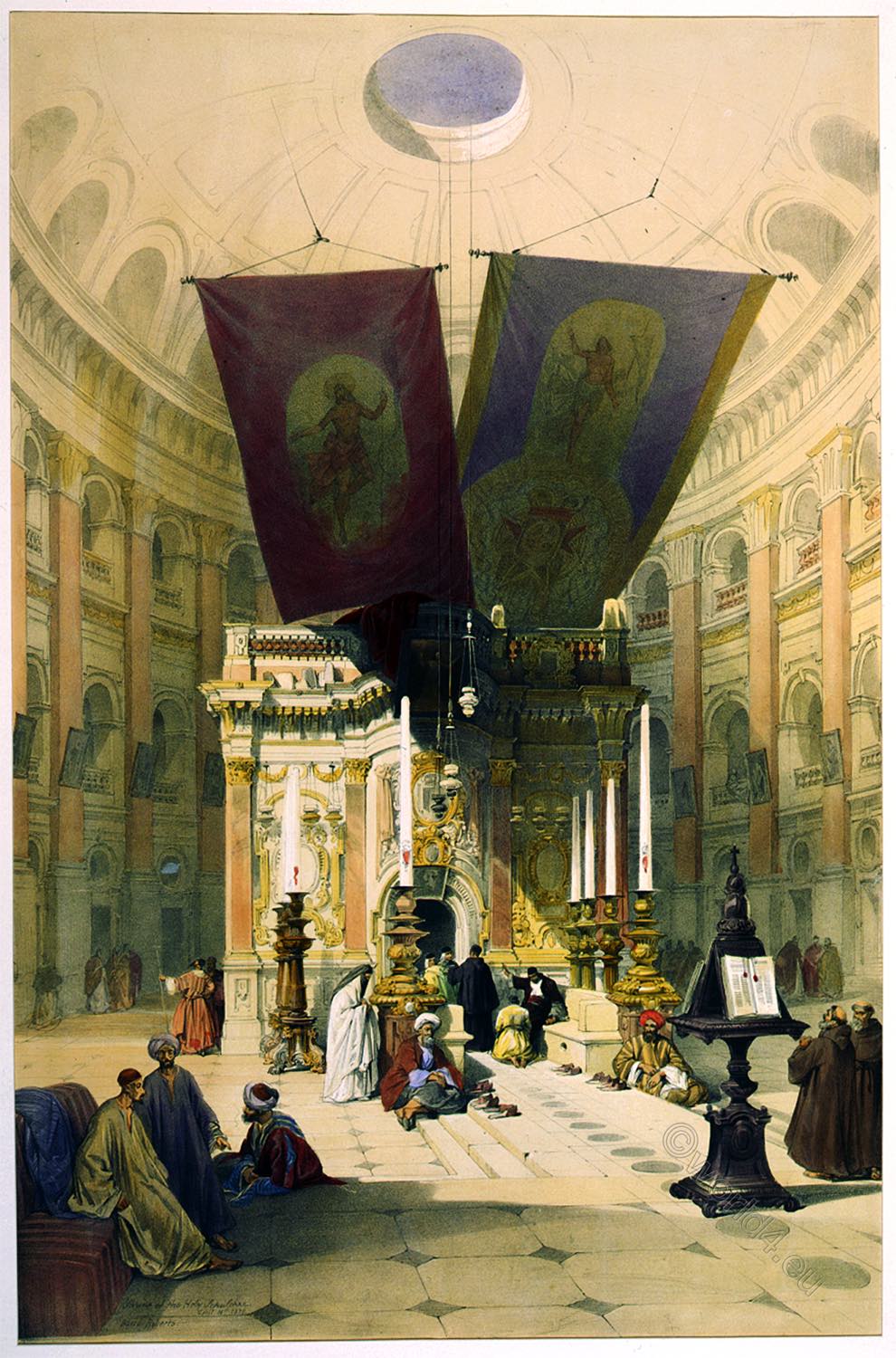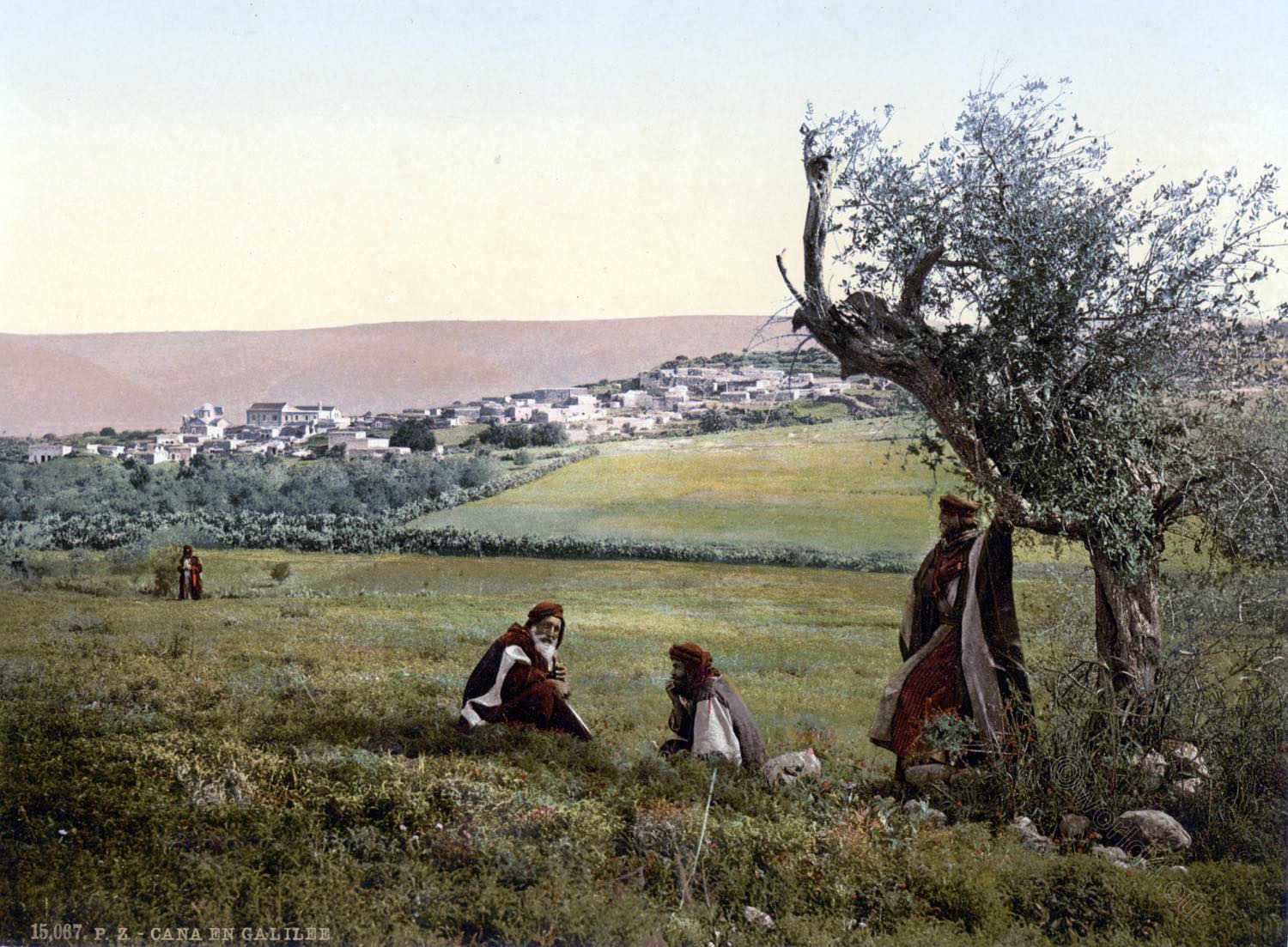
In the New Testament, Cana is considered the setting of the wedding at Cana, which is exclusively narrated in John’s Gospel (John 2:1–11). According to the Johannine account, Jesus performed his first miracle here, turning a large quantity of water into wine.
Some traditions also indicate Cana as the birthplace of Simon the Zealot, one of the twelve apostles of Jesus Christ.
The evangelist does not give precise information about its exact topographical location, which is therefore not known to us with certainty. A tradition dating back to the 13th century identifies it with the village of Kefr Kenna, 7 kilometres north-east of Nazareth; others locate it near Kenet el-Jalīl (Cana of Galilee, also known as Khirbet Qana), further north, but also near ‘Ain Kana, particularly close to the other two villages and more likely due to the etymology of the name, or near Qana, a village in southern Lebanon.
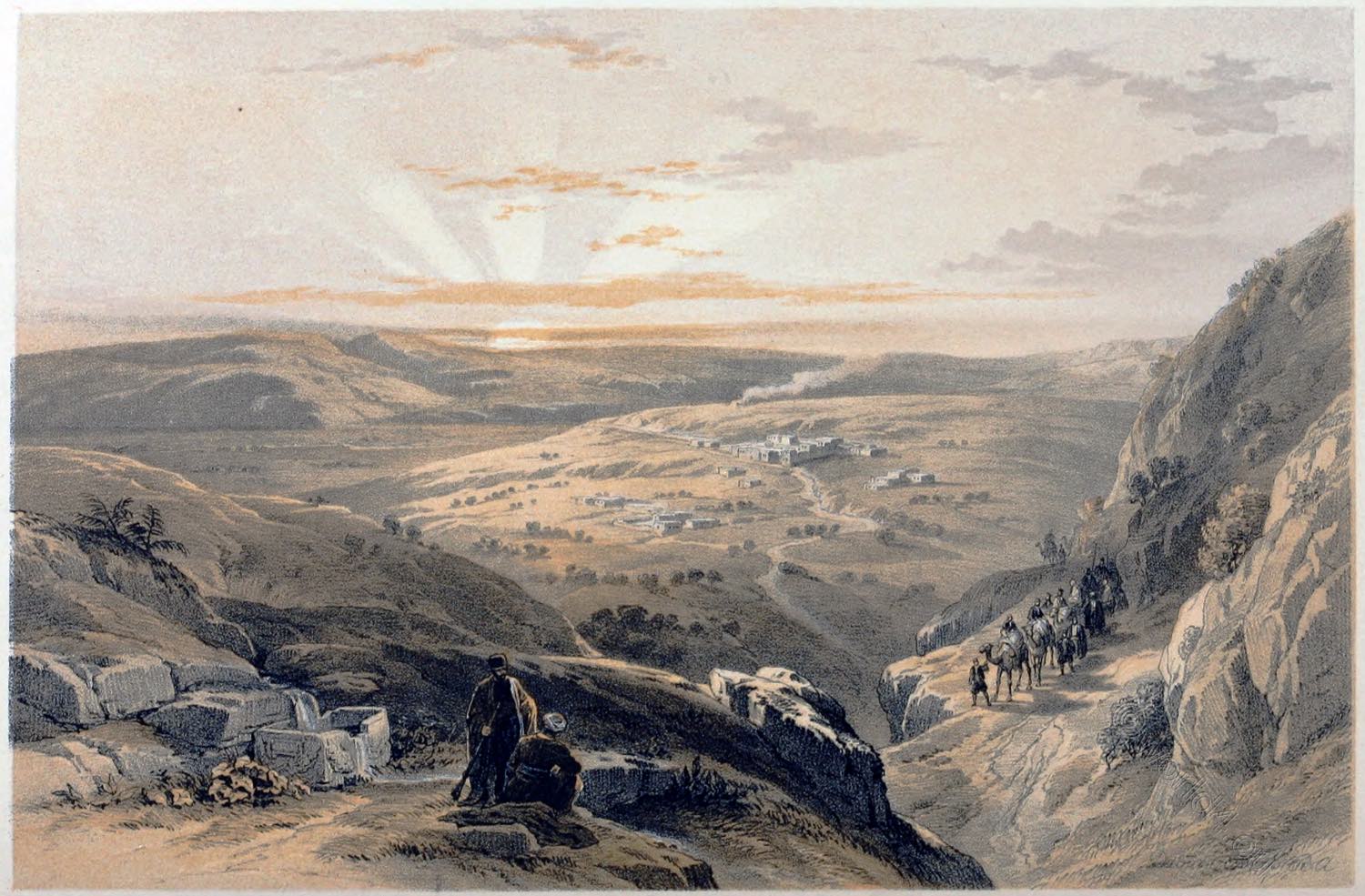
CANA.
by David Roberts.
The View is full of traditionary holiness. In the small Greek Church, at the foot of the hill, is shown by the priest, as an invaluable relic (on the authority of tradition), “one of the water-pots” in which the water was changed into wine. For preservation, it is built into the wall. The Church itself is pronounced to have been raised on the spot where the marriage-feast was celebrated. The ruins of an adjacent house are regarded, on the same authority, to be those of the dwelling of our Lord: the disciple Nathanael was a native of Cana. 1)
The nature of the Miracle may allow of some elucidation here, narrow as are the limits to which it must be confined. It seems to be implied in the narrative, that our Lord had previously intended to give some evidence of his divine power on the occasion of the marriage; and even that he had declared his intention. For his mother, on the first emergency of the feast, the failure of wine, evidently suggests it to him, as the object of his interposition; and by what other means than miracle could he have supplied it at the moment? Yet she could never have seen him work a miracle before.
His answer confirms the idea of a previous declaration; for it is equivalent to the words, “In giving my evidence of divine power, I must not be interfered with by human suggestion. The time on which I have determined for it has not yet come.” It is not unnatural to conceive, that He then suffered some period to elapse; perhaps, until it was known among all the guests that the wine had been wholly consumed, and thus the deficiency distinctly felt and openly acknowledged.
The extreme succinctness of the Gospel narratives in general renders them mere outlines, which, in all humility, we are entitled to fill up with the natural features of the transaction. His mother then alludes no further to the deficiency of the wine, or rather, abandons the suggestion altogether yet is still so fully convinced of his intention to give; some proof of his divine power, that she bids the servants, “Whatsever he saith unto you, do it.”
Of course, the supreme Lord of Miracle might have wrought a wonder of a wholly different order, more stupendous in its effects, and, from its grandeur, more likely to spread his name through all ranks of his nation. But the change of the water into wine bears the peculiar characteristic by which his union of the divine and human natures was distinguished. It was a work of kindness as well as of power. It relieved the master of the feast from an immediate and perplexing want, and it met that want with a sudden munificence, 2) which marked the act as divine. Kindness to his mother, too, may have mingled in his choice of the miracle.
He had vindicated the majesty of that great instrument of Heaven, by declaring that its use was not to be dependent on any personal and human influence; and having thus clone, he soothes and honors her in the presence of the guests and attendants, by adopting her wish before them all. Some reasons for the selection of a Marriage-feast as the scene of the primary miracle are sufficiently obvious; though it may be presumption, in the highest intellect of man, to assume that it knows all the reasons of any one miracle. The presence of our Lord at a festivity, and that one of the most crowded and joyous of all the social festivities of Palestine, instantly marked his Religion as wholly distinct from the frowning formalities and ascetic superstitions of the Jewish sects.
His giving the assemblage an unexpected, and even a bounteous, increase of the proverbial means of enjoyment, was only an additional pledge of his sympathy with the customary habits and harmless indulgences of man. But his choice of a Marriage-feast as the commencement of his Mission may have had a reference of a higher rank. The connexion of our Lord with his Church is represented, in both the Old and New Testament, under the figure of a Marriage.
He is the Bridegroom, His redeemed the Bride. The character of the Married State,—the sincere confidence,—the perfect identity of object,—the intimate, pure, and permanent union, are applied by Scripture to the sacred relation even in our world. How much more strongly to that exalted and immortal condition in which “we shall see as we are seen,” and in which “the spirits of just men made perfect” go on “from glory to glory, as in the presence of the Lord!”
1) John ii. 2) The “measure” in the original was either the Hebrew (74½ gallons), or more probably the Attic Metretes (9 gallons). The vessels to contain water for the continual ablutions of the Jews must have been large. Dr. E. Clarke found them from 18 to 27 gallons, which would be about the “two or three measures a-piece.”
Source: The Holy Land, Syria, Idumea, Arabia, Egypt, & Nubia, by David Roberts, George Croly, William Brockedon. London: Lithographed, printed and published by Day & Son, lithographers to the Queen. Cate Street, Lincoln’s Inn Fields, 1855.
Continuing
Discover more from World4 Costume Culture History
Subscribe to get the latest posts sent to your email.

